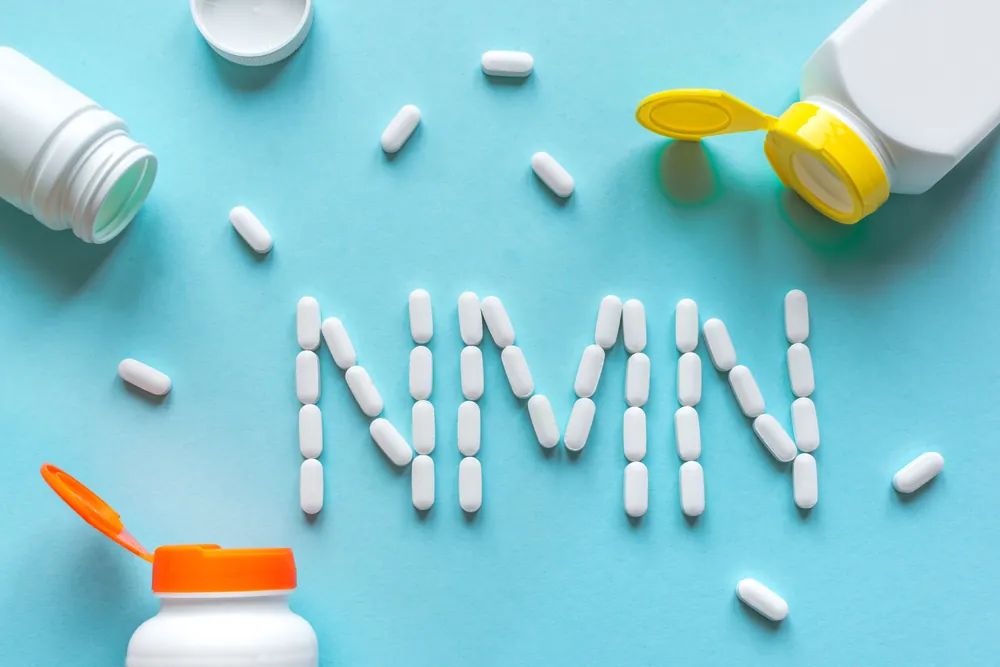A clinical trial of endurance runners recently published in the Journal of the International Society of Sports Nutrition found nicotinamide mononucleotide (NMN) to increase several measures of aerobic capacity.
Could NMN and exercise be synergistic?
NMN is a NAD+ precursor well known to longevity researchers for its role in various aging pathways, particularly ones related to energy usage and metabolism. NMN supplementation has been shown in both rodents and humans to trigger some of the same molecular pathways as exercise. However, there’s also reason to believe that NMN and exercise may work together for even greater effects.
The NAD+ salvage pathway helps replenish NAD+ levels by generating it from NAD+ precursors. These precursors come from both our diets and recycling NAD+ that has been used up and broken down into other molecules. Exercise increases the rate-limiting enzyme in this process (NAMPT), potentially allowing more NMN in the body to be converted to NAD+. Furthermore, studies in both young and aged rodents have shown NMN plus exercise to increase cardiovascular fitness more than by either intervention alone.
Researchers at Guangzhou University recently conducted the first clinical trial studying the combined effects of NMN and exercise in humans. [1]
NMN supplementation routines and exercise regimens
40 men and 8 women between the ages of 27 and 50 were recruited for the study. Each subject was a regular endurance runner from the same running club in China and abstained from caffeine for the duration of the study. For six weeks, participants took either a placebo or 150 mg, 300 mg, or 600 mg of powdered NMN twice per day, once in the morning and once at lunch or in the afternoon prior to a training run.
For training, all subjects exercised 5-6 sessions per week, with 2 sessions of cycling and 3-4 of running. Each session lasted between 40-60 minutes. Target heart rates were given individually for all subjects based on their aerobic fitness at the start of the study.
Did NMN help improve aerobic fitness?
No statistically significant differences were found with NMN supplementation in measures of weight loss and body composition. The researchers also conducted a multitude of aerobic fitness measurements before and after the interventions. In general, at peak effort, most measures were unchanged with NMN supplementation, such as VO2 max, maximum heart rate, and peak power. However, subjects showed a dose-dependent improvement of fitness at more moderate effort of the first ventilatory threshold (VT1).
For example, at VT1, subjects who took 600 mg NMN twice per day had higher VO2 and lower heart rates than the lower doses and placebo. The optimal dose of NMN in humans is not clear, but several experiments in rodents have found better results with low doses of NMN compared to high doses, including lower doses than the human equivalents used in this study. However, these previous studies were looking at pathological conditions rather than exercise. This suggests that the optimal NMN dose in humans is likely context-specific.
The authors attributed these dose-dependent improvements to an increased utilization of O2 by skeletal muscle. An improvement in cardiac function is another typical cause of improved aerobic fitness. However, this would also have likely led to higher peak performances, which were not seen in this study. NMN is also known to disproportionately impact skeletal muscle relative to other tissues. Therefore, NMN likely acted by improving muscular efficiency, although the researchers did not take any muscle biopsies or conduct any biochemical analyses.
No adverse events were reported during the intervention, consistent with previous studies in rodents and humans.
Here, we administrated three dosages (300, 600, and 1200 mg/d) of NMN supplementation to healthy amateur runners during a 6-week exercise training program. The main finding of this study is that NMN supplementation during exercise improved first ventilatory threshold (VT1) and power@VT2 without changing the VO2 max and that this improvement was dose-dependent.
Conclusion
NMN, a drug known for its effects on longevity, has had mixed results in human clinical trials despite robust data in rodents. A decline in physical fitness is one of the most noticeable effects of aging, and in this study, NMN further improved fitness above and beyond regular exercise.
Although there was no NMN-only group to compare to, it seems likely from previous studies that such a group would have been outperformed by the exercise groups. With this assumption, it can be concluded that the two interventions have a synergistic effect. The double-blind, placebo-controlled study design, as well as the dose-dependent relationship borne out in the results (i.e. placebo < 300 mg < 600 < 1200 mg/day), provide a lot of confidence that NMN truly was responsible for the improvements seen in these subjects.
However, as always, questions remain. Subjects were exclusively Chinese, young or middle-aged, healthy, and regular but amateur runners. NMN has shown sex-dependent effects in previous studies, but there were not enough female participants to do a separate statistical analysis. Additionally, the effects were only investigated at 6 weeks, so more long-term results remain unknown. Only physiological measures were taken from subjects, so little can be concluded as to why these effects were seen. This study hopefully will inspire more investigation regarding the applicability of these results to other populations and the molecular pathways involved.
Literature
[1] Liao, B., et al. Nicotinamide mononucleotide supplementation enhances aerobic capacity in amateur runners: a randomized, double-blind study. Journal of the International Society of Sports Nutrition (2021). https://dx.doi.org/10.1186%2Fs12970-021-00442-4






